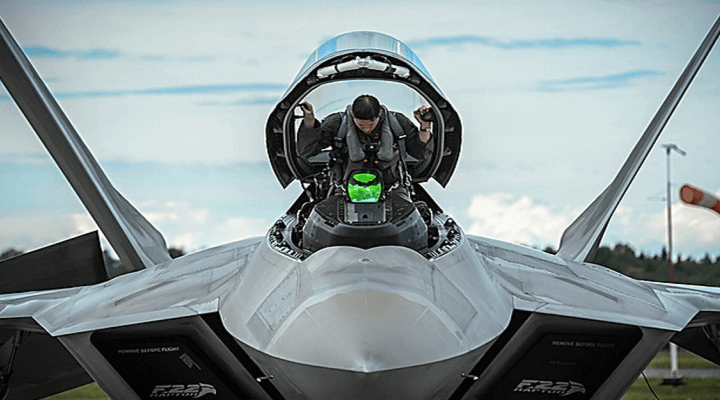In this article in our series on Military Occupational Specialties and Security Clearances, we look at a sampling of jobs in the Air Force. It’s certainly possible to enlist in the Air Force even if there is something in your background that would prevent you from ever getting a security clearance. Some of those Air Force Specialty Code (AFSC) fields include:
- Safety
- Material Management
- Vehicle Maintenance
- Services
- Mission Support
- Manpower
- Medical
- Contracting
- Financial Management and Comptroller
For the most part the rest of the AFSCs require either a Secret or Top Secret security clearance. Very few require a TS/SCI. Below is a sampling of some jobs requiring a security clearance.
Secret air force jobs requiring jobs security clearance
1W0X1 – Weather Specialist
Weather forecasting is an important mission in the Air Force. Weather specialists typically manage the collection, analysis, and forecasting of atmospheric weather and space environmental conditions to enable better decision-making when applying land, air, space and cyberspace power across the full spectrum of military operations.
They use weather tactics, techniques, and procedures to integrate weather information into the decision-making process at all levels, to mitigate and exploit weather impact on operations. To play their part effectively, they must also understand war fighter tactics, techniques and procedures to maximize air, space and cyberspace combat power.
1A2X1 – Aircraft Loadmaster
This position is critical to aircraft operations. A loadmaster performs pre and post-flight inspections of their assigned aircraft and aircraft systems. A big part of their job is to properly and safely place cargo/passengers with regard to aircraft limitations/restrictions, along with determining the adequacy of cargo documentation.
They also supervise the loading and offloading of cargo/passengers and are responsible for computing aircraft weight and balance and to demonstrate the use of life support equipment to crew and passengers as applicable. Finally, they perform aircrew functions and other mission-specific duties to include the airdrop of personnel and equipment/cargo.
1T2X1 Pararescue
When an aircraft goes down, these are the airmen that spring into action. Along with the planning, leading, supervising, instructing, and evaluating pararescue activities, a big part of their job is functioning as the rescue and recovery specialists on flying status to rescue a downed aircrew or surface element. They are trained to provide rapid response capability and to operate in all six of the different types of geographic disciplines: mountain, desert, arctic, urban, jungle and water, day or night, to include friendly, denied, hostile, or sensitive areas. Once on the scene, they assist with survival, evasion, resistance, and escape (SERE), provide emergency trauma and field medical care, security and move recovered personnel and materiel to safety or friendly control when recovery by rescue aircraft is not possible.
Top Secret air force jobs requiring security clearance
1N0X1 – Operations Intelligence
Ops intel airmen operate in a diverse and complex operational environment, supporting all aspects of Air Force operations to ensure the U.S. maintains dominance in air, space, and cyberspace. They also support Joint Force, Department of Defense, and National Intelligence Agency operations as required.
One of their main functions is to advise commanders on threats to the U.S., allied forces and missions as well as direct the employment of resources in the area of Intelligence, Surveillance and Reconnaissance (ISR). Through threat systems and intelligence analysis, they develop detailed execution plans for air, space, and cyberspace operations.
1B4X1 – Cyber Warfare Operations
Cyber warfare is one of the newer jobs in the Air Force. These airmen perform duties to develop, sustain, and enhance cyberspace capabilities to defend national interests from attack. They conduct both Offensive Cyberspace Operations (OCO) and Defensive Cyberspace Operations (DCO) using established tactics, techniques, and procedures to achieve set objectives.
They also execute command and control (C2) of assigned cyberspace forces and de-conflict their operations across the kinetic and non-kinetic spectrum. Along with testing the development and capabilities of new cyber equipment, they also partner with DoD, interagency and coalition forces to detect, deny, disrupt, deceive, and mitigate access to sovereign national cyberspace systems by adversaries.
1A6X1 – Flight Attendant
This is a small AFSC with only around 251 positions in the whole Air Force. Their job is to provide for passenger safety during aircraft operations. They must demonstrate and maintain proficiency in the use of emergency equipment, emergency procedures, and egress from all different types of aircraft assigned. They are also responsible to brief passengers on normal and non-normal use of aircraft systems and equipment, in addition to orderly and expeditious evacuation of passengers and crew should it be needed. They are also trained to provide emergency medical assistance.
As part of a flight crew, they do their part performing preflight, during flight, and post-flight inspections of aircraft emergency, cabin, and galley equipment. They also operate aircraft systems and equipment under their scope of control, such as electrical, environmental, water, interphone, doors, and exits. And finally, they are responsible for cleanliness of aircraft interior when away from home station.
TS-SCI security clearance air force jobs
1C6X1 – Space Systems Operations
Airmen in this AFSC detect, identify, and maintain orbital parameters on earth satellites using optical and radar sensors. They also protect friendly satellite communications and disrupt adversary satellite communications through defensive and offensive space control systems.
Another part of their job is to detect and track missile launches using a variety of ground and space-based sensors and forward information to the appropriate command and control agencies. They also work to plan and execute satellite contacts, resolve emergencies, and perform satellite commanding during launch, early orbit, daily operations, and end-of-life testing.
When it comes to ballistic missile and space launches, it is these airmen that perform range operations and aeronautical tests to fulfill war fighting and national requirements for DoD, NASA, and commercial users.
They also interface with several related agencies including the Joint Space Operations Center, regional Joint and Combined Air and Space Operations Centers, National Reconnaissance Operations Center, Missile Warning Center, and NORAD/USNORTHCOM Command Center.




